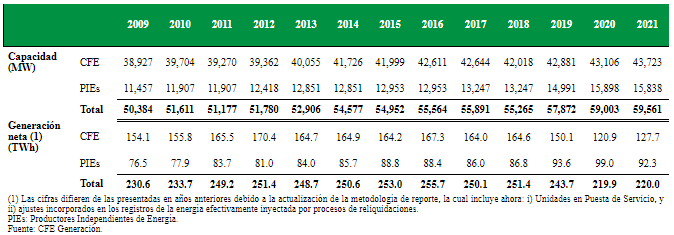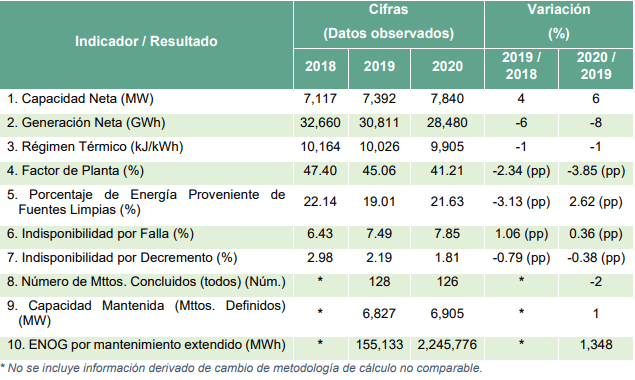Of the total net energy generated by the Federal Electricity Commission (CFE) of Mexico in 2021, that corresponding to clean energy was 23 percent.
This includes hydroelectric, nuclear, geothermal, wind and photovoltaic generation and was one percentage point higher than in the previous year.
As of December 31, 2021, the company’s installed generation capacity totaled 59,561 MW.
With combined cycle plants of the CFE, 20.1% of the annual production was generated, while with combined cycle plants of Independent Energy Producers (PIE) 41.09 percent was generated.
Likewise, 2.02% was generated with coal and 10.3% with conventional steam.
Clean energy
However, of the generation of CFE plants (without considering IPPs), the percentage of generation with clean energy reaches a value of 39 percent.
The effective power generation capacity in charge of the CFE, as of December 31, 2021, is made up of 192 power generation plants, including those of the IPPs.
In total, these plants contain 969 active units distributed throughout the country
Capacidad instalada y generación de la empresa

CFE
While the company maintains exclusivity in transmission activities in Mexico, the CFE’s transmission network considers voltage levels between 69 and 400 kV.
In addition, the transmission requires the transformation process, for which electrical substations are used to change the properties of the energy and facilitate its transport.
At the end of 2021, this network reached a total length of 110,347.18 km.
Energía limpia de la empresa

Pursuant to the Electricity Industry Law (LIE), there are four regulated tariffs within the electricity sector and the Energy Regulatory Commission (CRE) is the authority responsible for determining and publishing the calculation and adjustment methodology.
Regarding the energy transmission service, in terms of the LIE, the methodology for determining transmission rates must be based on the recognition and recovery of efficient operation, maintenance, financial and administration costs, as well as considering the depreciation, taxes and a reasonable profit.
In September 2015, the CRE issued the resolution that determined the applicable rules for calculating the transmission rate during an initial period of three years (2016-2018).
Then, on December 27, 2018, the CRE determined an extension to the initial tariff period through Agreement A/063/2018, and on December 16, 2019, the CRE determined to continue with the extension of the initial tariff period through agreement A/039/2019.
Distribution and Clean energy
The distribution networks have an expansive nature with the capacity to provide electricity to almost the entire population of the country.
The distribution network is made up of medium voltage networks with levels between 2.4 and 34.5 kV, as well as low voltage networks at levels of 110 and 220 V.
Like transmission, energy distribution requires a transformation process, for which electrical substations are used to change the properties of energy and facilitate its transport.
As of December 31, 2022, the length of the distribution networks was approximately $32,115 kms.
As a strategic activity of the Mexican State, the distribution service is also regulated and in the same way its rates are determined by the CRE.
![]()

